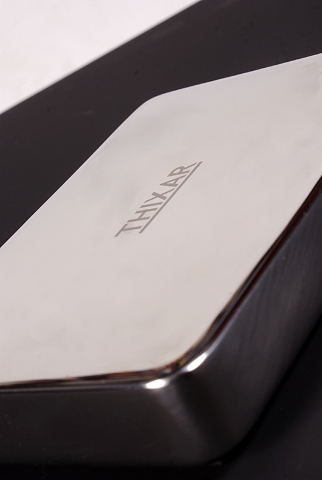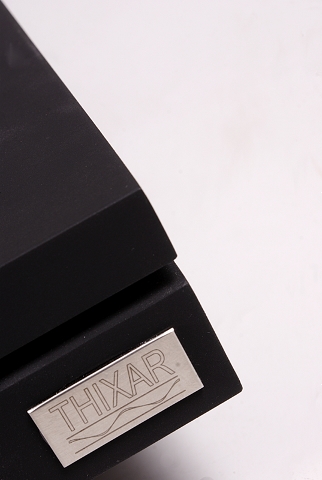about Audio, High Fidelity
& Home Entertainment technologies
pid: 607-2025/10/01 (v1.2)
Privacy Policy

Listening both the Silence Plus and the Eliminator mainly included the evaluation of a reference system with and without these devices in place. We relied on the same setup as in the lab evaluation procedure, therefore, in the case of the Silence Plus, the Linn LP12 was successively placed directly on a support surface (quite similar with that used for the lab evaluation) and on the platform, while, in the case of the Eliminator, the same preamplifier used in the measurements was the one that was subjectively evaluated in a similar manner. Apart from these two devices, the rest of the system was the standard we normally use in all reviews and included the Teac Esoteric P70/D70 transport/DAC pair, the Melos Plus Series Line preamplifier, the Parasound HCA3500 power amp, and the ATC SCM-50PSL loudspeakers. In the case of the LP12, a Rotel RHQ-10 "Mitchi" phono preamplifier was, also, used.
Silence Plus does not pose any particular difficulty in its setup, except -perhaps- the need for some leveling, which should be done through the support surface itself, since the platform does not offer a means for adjustment, like spikes, cones or something similar in its basic version (and, as mentioned earlier, Thixar does not recommend them anyway). The Eliminator is, obviously, even simpler: The user should place it at the point of maximum vibration of the cover (a criterion easily applied by just touch the surface), which, in most cases of a standard structure, without bracing or additional fixing, is its geometric center. Thixar recommends to search for the place that ensures the highest ringing (the result of a simple tap on the surface), a practical method that is expected to offer the best results (needless to say, some experimenting, here, is not a bad thing).
With the Silence Plus in place, the first impression you get is that the result is more tight, with a lower level of mechanical noise and a clear, better-defined stereo image. The differences may be small, nevertheless decisive - considering the overall quality level of the reference system, as its dynamic range seems to improve and the sound sources included in each recording gain a better feeling of space.
In the very low-frequency part of the audio spectrum, the system seemed to gain in both the space volume and the detail description, sounded more "rhythmic", with better attack times, better microdynamics and generally created the feeling of being less hazy, more precise and with a tighter character.
Mids also seemed to benefit, especially in clarity (with both soloists and the choir being described in more life-like manner) while towards the high-frequency range the total effect is smaller but, with some effort, possible to detect. The improvements here, are mainly about a sense of transparency and swiftness, with the listener being more capable to detect and appreciate small details and getting a better feeling of air of the recording.
If one wanted to summarize the change brought about by the use of Silence Plus in the reference system, he could use the phrase "more discipline". The analog source appeared to have a more accurate behavior and the system as a whole improved on dynamic issues.
The benefits of using Eliminator, in this particular setup, were small but they were far from being considered insignificant. It is important to clarify here that some effort is required to detect the resulting differences and, with the exception of some extreme situations where very sensitive devices are combined with a noisy and vibration-prone environment, my perspective is that in most cases there will probably be no impressive changes, only an improvement at specific points. That said, however, using the Eliminator created the impression that its effects are more focused on the extremes of the audio spectrum, i.e in the very low and low-frequency range and, also in the top-high frequency range. Unlike Silence Plus, which improved the dynamics and stereo imaging, there is not a similar feel here.
Towards the low-frequency limit, the system seemed to gain mainly in presence, the impression being centered not to a feeling of range extension but, moreover, to that of a better control of the details, a sense of completeness in the description of the dynamic contrast compared to a more flat and strict character that we got as long as the device was operating without the Eliminator. The feeling of improvement was preserved, also, in the rhythm section, which was rendered better in fullness more controlled, and with a better sense of realism.
Highs appeared to be affected too, showing a somewhat better sense of timing with faster attacks and a more natural sustain/release. The system sounded brighter, rich and generally more enjoyable.
To sum up, Eliminator creates the impression that it "clears" the ends of the spectrum, offering better control and detail. The system seemed to get better in its timing attributes and microdynamics and sounded more natural and effortless.
Conclusion
Thixar's ideas seem to work well and both the Silence Plus and the Eliminator appear to have a positive effect on the final sound of a system that includes them. The feeling the listener gets is that there is a quite significant improvement, especially if one has high expectations from a system and is willing to look for the details. Based on these, both products are of particular interest and should be thoroughly tried-out because they can prove to be decisive investments!
Listening Sessions Recording
The following recordings were made with a DV-RA1000 Tascam master recorder (using 24bit/192kHz sample rate) and you can download them to have an impression of what the device under review sounded like. It is obvious that any recording of this kind could not be absolutely transparent but, according to our experience, the majority of sound attributes we listen to, during the actual listening sessions, are preserved. No need to say that you should use these samples cautiously and for informative purposes only. Do not rely on them exclusively to make any buying decisions. The file format is .flac, so expect that the zipped files will be quite large (even if the clips are about a minute or less long. You could use an ABX listening tool like the ABX plug-in for foobar2000 if you want to make some more elaborate experiments. Contact us if you have any questions.
| Listening Sessions Recording TOC | |
|---|---|
| Track #01 | Linn LP12 + Thixar Silence Plus |
| Track #02 | Linn LP12 + Support Surface |
| Track #03 | Preamplifier + Thixar Eliminator |
| Track #04 | Preamplifier (no cover damping) |
Previous | Next | More Reviews



